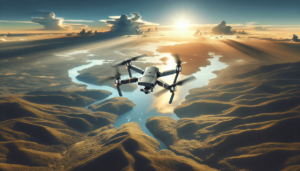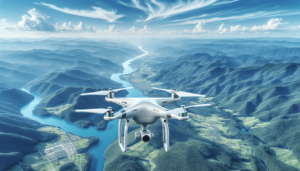Have you ever found yourself gazing up at a breathtaking landscape from a bird’s-eye view and thought, “Wow, I wish I could capture this moment forever?” Us too. There’s something magical about aerial photography that gives us a fresh perspective on the world below, making the ordinary seem extraordinary. Whether it’s the geometric patterns of urban landscapes, the rugged cliffs of a coastline, or even a simple country field, seeing it from above can transform our perception and appreciation of what we thought we knew.
Aerial photography might seem daunting at first, akin to learning a new language that involves both art and technology. But fear not! With some tips and a bit of practice, we can all start shooting like pros. Let’s uncover the secrets of aerial photography together, because we all deserve to capture those soaring views beautifully.

Understanding Your Equipment
First up, let’s chat about the equipment that opens up the sky for us. This doesn’t mean we have to break the bank, but knowing what tools we need and how they work is essential.
Choosing the Right Drone
Drones have made aerial photography more accessible than ever. But with so many options, which one do we choose?
- Budget: Before anything else, let’s decide how much we’re willing to invest. Drones can range from a couple of hundred dollars to several thousand. A good starting point is to match our ambition and pocket size.
- Camera Quality: We’re aiming to capture stunning images, so a drone with at least a 12-megapixel camera is a must-have.
- Stability: A drone with a good gimbal system can make a world of difference in keeping our images sharp and our videos smooth.
Here are some great options to start with:
| Brand | Model | Camera Quality | Price Range |
|---|---|---|---|
| DJI | Mavic Air 2 | 48 MP | $799 |
| DJI | Mini 2 | 12 MP | $449 |
| Autel | EVO Lite+ | 50 MP | $1,249 |
| Parrot | Anafi | 21 MP | $699 |
Understanding Drone Features
Okay, so we’ve picked our drone. Now we need to understand its features.
- GPS and Autopilot: These are our best friends for stable hovering and flight paths. We won’t get lost in the sky!
- Battery Life: Ideally, we want at least 20 minutes of flight time. This way, we’ll have plenty of opportunities to capture that perfect shot.
- Range: The farther our drone can fly, the better. Keeping it within our line of sight is crucial, but a good range gives us flexibility.
Once we’re comfortable knowing what our drone can do, it’s time to take to the skies!
Preparing for Take-off
Before we channel our inner pilot, preparation is key. Just like planning a road trip, we need a flight plan. Luckily, it’s not as complicated as it sounds.
Checking Regulations
Getting familiar with local rules isn’t just about being a good citizen; it’s about ensuring our safety and that of those around us.
- Registration: Registering our drone with local aviation authorities might be required depending on our location and drone size.
- No-Fly Zones: Airports, military bases, and some public areas often fall into no-fly zones. Apps like AirMap can help us avoid restricted areas.
Weather Considerations
Weather can be our greatest ally or greatest foe. We wouldn’t want to fly during a windy day where our drone might end up across town.
- Wind: Mild wind is okay, but anything strong could mess with our drone’s stability.
- Light: Early mornings and late afternoons provide the best lighting conditions, also known as the golden hours.
Plan Our Shots
It might sound obvious, but thinking about what we want to capture can greatly enhance our aerial photography experience.
- Scout Locations: Google Earth is a great tool. Let’s pinpoint some potential spots and imagine how we can compose our shots.
- Storyboard: Just like filmmakers, planning a series of shots can help us tell a story.
Capturing the Perfect Shot
We’re prepped and ready. Now comes the artistic part where we get to unleash our creativity.
Composition Techniques
Drawing from traditional photography principles can help guide our aerial creativity.
- Rule of Thirds: Aligning subjects along the lines or at their intersections can make our photos more engaging.
- Leading Lines: Roads, rivers, and coastlines can guide viewers’ eyes through the image.
Try a few shots with different compositions and angles, and compare which looks best.
Experiment with Altitudes and Angles
Playing around with height and angles can change how we perceive a scene. We might find that a lower altitude shot captures more detail, while a higher angle creates striking abstract patterns.
Use Camera Settings
Maximize our drone camera’s capabilities by understanding its settings.
- ISO and Shutter Speed: Keeping a low ISO ensures we minimize noise, and adjusting the shutter speed can help us capture motion.
- Filters: Using ND (neutral density) filters can help manage exposure in bright conditions.
Post-Processing Magic
No photography guide would be complete without a nod to the magic of editing.
- Software: Tools like Adobe Lightroom or Photoshop are perfect for enhancing our images.
- Adjustments: Play with contrast, brightness, and saturation to bring our shots to life. Remember, moderation is key to maintaining a natural look.
Safety and Maintenance
We’ve captured some amazing shots, but keeping our equipment safe ensures more adventures.
Follow Safety Protocols
Safety is paramount when flying drones.
- Line of Sight: Always keep our drone in sight and maintain proper distance from people and buildings.
- Altitude Limits: Most countries have maximum height restrictions. Keeping track ensures we fly safely.
Maintain Our Drone
Regular maintenance keeps our drone in top condition.
- Check Firmware: Ensure the drone’s software is up-to-date for optimal performance.
- Inspect Before and After Flights: Look out for any wear and tear or damage to the propellers and body.

Expanding Our Horizons
Now that we’re starting to get comfortable, why not explore other areas of aerial photography?
Night Photography
A whole new world opens up at night. But taking nighttime shots comes with its own challenges, like handling low-light conditions. Here’s where our ISO settings and longer exposure times come into play.
Videography
If capturing a single moment is like a snapshot of time, videography is a dynamic storytelling medium. Let’s explore this by using our drone’s video function, trying out different movements like orbits and reveals.
Collaborate with Others
Don’t shy away from sharing our work or seeking feedback. Who knows, another photographer might offer insights that take our skills to the next level!
Conclusion
Embarking on the journey of aerial photography holds the promise of not only enhancing our creative skills but also elevating our perspective, quite literally. With a newfound understanding of the equipment, preparation, and techniques, we’re well on our way to capturing the skies.
Remember, like any artisanal journey, aerial photography becomes more enriching the more we practice and explore. Let’s keep pushing the boundaries, always striving for that elusive perfect shot. Not only does it excite the senses, but it also offers a unique viewpoint that invites others to see the world through our lens.
So, who’s ready to embrace the skies and capture those high-flying moments? We certainly are!
![7 Essential Aerial Photography Tips For Beginners [2025]](https://droneaperture.com/wp-content/uploads/2025/01/7-essential-aerial-photography-tips-for-beginners-2025-1-300x171.png)

